- Iceland
- North Iceland
- Holuhraun: See the lava field of the last eruption in Iceland

This is one of the highlights of our stay in Iceland! It is not every day that you have the opportunity to walk on barely cooled lava!
Summary
1But what is Holuhraun?
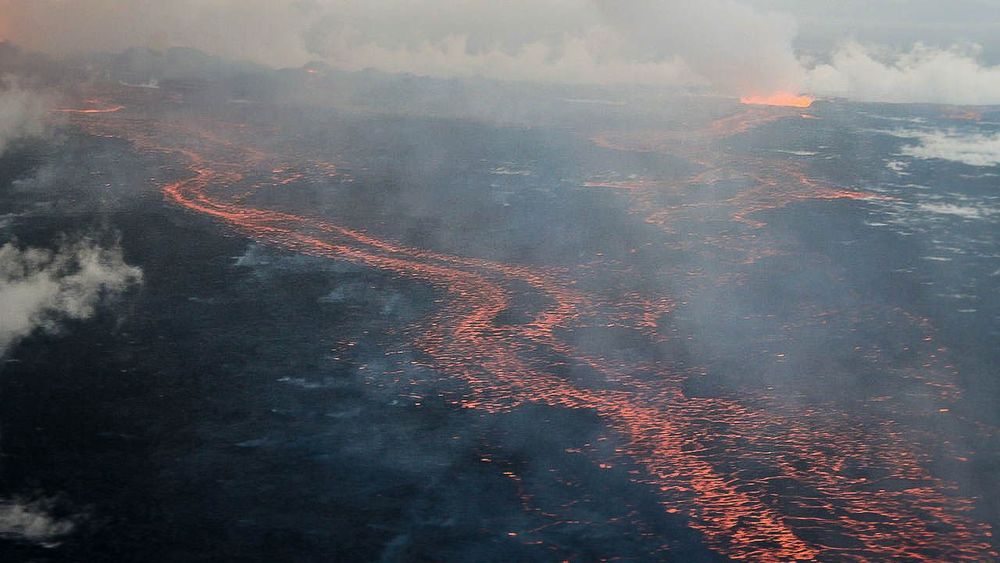
Holuhraun is a vast lava desert south of Askja and north of the immense Vatnajökull, in the eastern highlands. It was formed as a result of ancient successive volcanic eruptions from the Bárðarbunga, a volcano under the thick Vatnajökull glacier.
On 29 August 2014, the Bárðarbunga erupted again. 4 years after the Eyjafjallajökull, this volcano formed an eruptive crack 1.6 km long! From this crack, numerous lava fountains sprang up, producing massive flows that spread for several months, covering a large part of the former 84 km² lava field of Holuhraun. The eruption stopped 6 months later, in February 2015. Since then, the lava field has slowly cooled.
2Access to the new lava field in Holuhraun
The entire area was closed for several months after the eruption. In August 2015, a first small part of it could be reopened. In July 2016 we were very curious to be able to go to the bedside of the Holuhraun lava field to observe one of the recent flows.
Access to the lava field is from F910, south of Askja. The 4x4 is mandatory. It is easier to get there from Askja in the northeast, since the southwestern part of the F910 has many difficult fords. From the campsite in Drekagil (at the foot of Askja), you should take the F910, which goes southwards around Askja and is slightly closer to the Vatnajökull.
After about ten kilometers, the stony track gives way to a huge and magnificent desert of black ashes.
At that time (July 2016), only the northern and eastern parts of the lava field were open to the public. The western part was still closed because the lava was still too hot there with a high risk of toxic release. The white smoke plume from the western and southern parts of the lava field could be clearly seen.
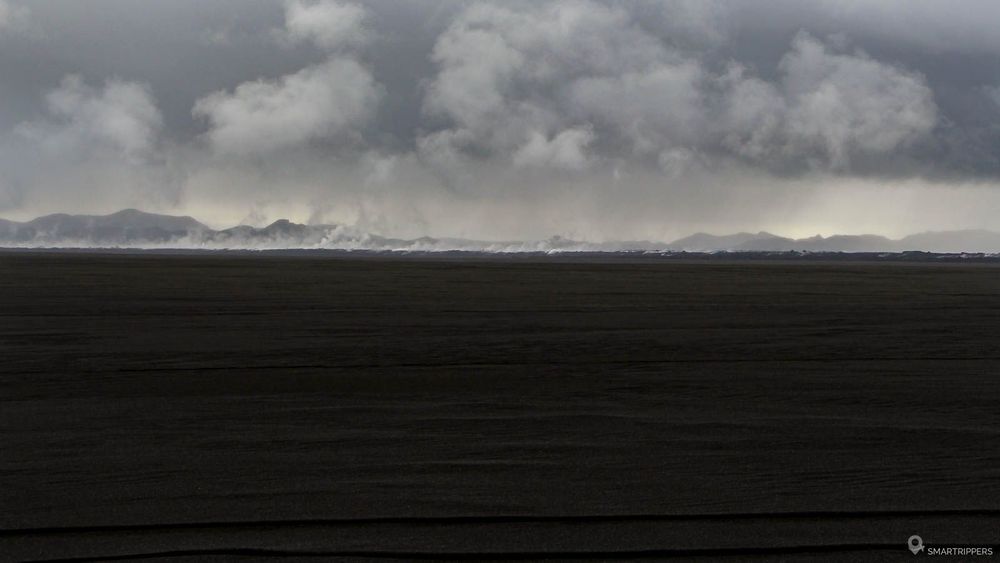
East access
We tried to take the East access first, the first one coming from Asjka. As we were not signposted, we followed a very small sign indicating the Svartá River in a southeast direction from the F910. The track then continues through the ash desert and soon reaches some rocks.
A second junction indicates the presence of the lava field on the right. The track then becomes more technical and soon arrives in front of a river, which seems to us to be one of the tributaries of the Jokulsà that we must cross to continue. On that day, the river seemed too high and tumultuous to us, especially with big stones on the ground. There was also a sign indicating that at least one big Jeep was needed to go beyond that. Our ground clearance was only 20 cm, so we waited for another vehicle (a huge 4x4) to pass by, which will have reinforced us in the fact that our Dodge Durango probably wouldn't have been up to the task of crossing the ford.
It is with reluctance that we turn back. We return to the F910 which we drive westward until we reach the northern access of the lava field.
It should be noted that natural hot water basins that are suitable for swimming would have formed as a result of the flow.
Northern Access
The north access is indicated after travelling several kilometres westward on the F910. The track always crosses the vast sandy desert, when a small sign indicates the lava field on the right. A car park is located a few meters from the road. GPS Coordinates: 64.922000, -16.725100
3Discovery of the Holuhraun lava field
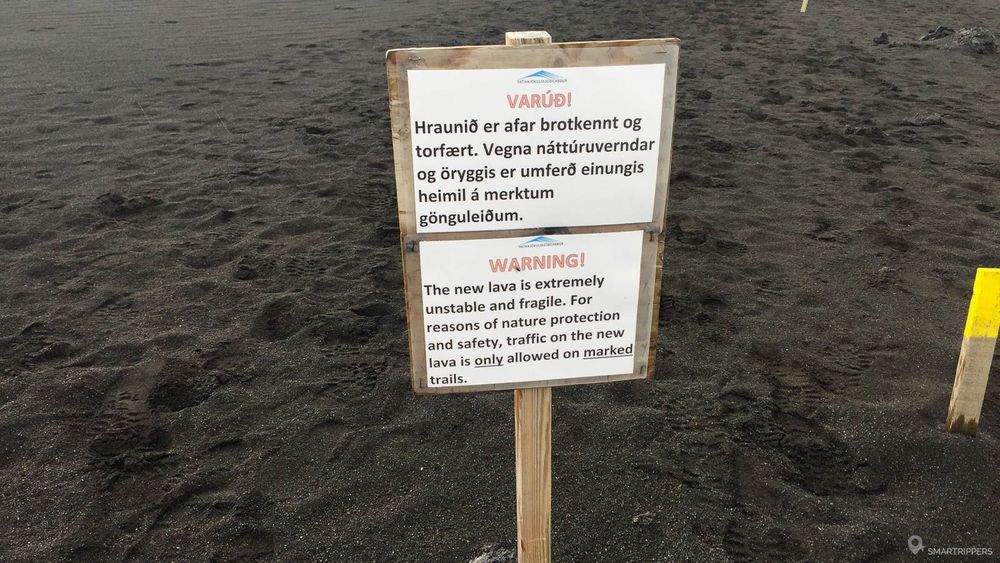
From the parking lot at the north entrance, a small 800-meters loop has been secured in order to discover the new Holuhraun lava field. The route is marked by yellow stakes that must be followed. Indeed, the lava being very recent, it is not yet well stabilized. Moreover, a sign reminds us of it at the start of the hike and we will soon discover it for ourselves.
This small loop that can be borrowed in both directions takes us through the lava field. It is under a beating rain that we begin the discovery, first by following the path in the ashes, then by ascending on the large blocks of lava.
The terrain is chaotic! The desert gives way to an immense flow of water from which we cannot see the end. Numerous gaping cracks testify to the recent cataclysm. Rock formations are fascinating! In some places, lava caves have collapsed and make us realize that the whole area is really unstable and can give in at any time.

It is important not to move away from the area marked by the stakes
The solidified lava holds our shoes, better not fall! We are not reassured about the stability of the rocks that crumble and tremble under our footsteps. We are therefore cautious all along the route, staying close to the stakes.
Beneath the superficial crust, the cracks show large red and yellow strata. Warm steam escapes from some of them. We let ourselves be invaded by this warm air coming out of the bowels of the earth! It's really impressive especially since the outside temperature is close to 0°C.
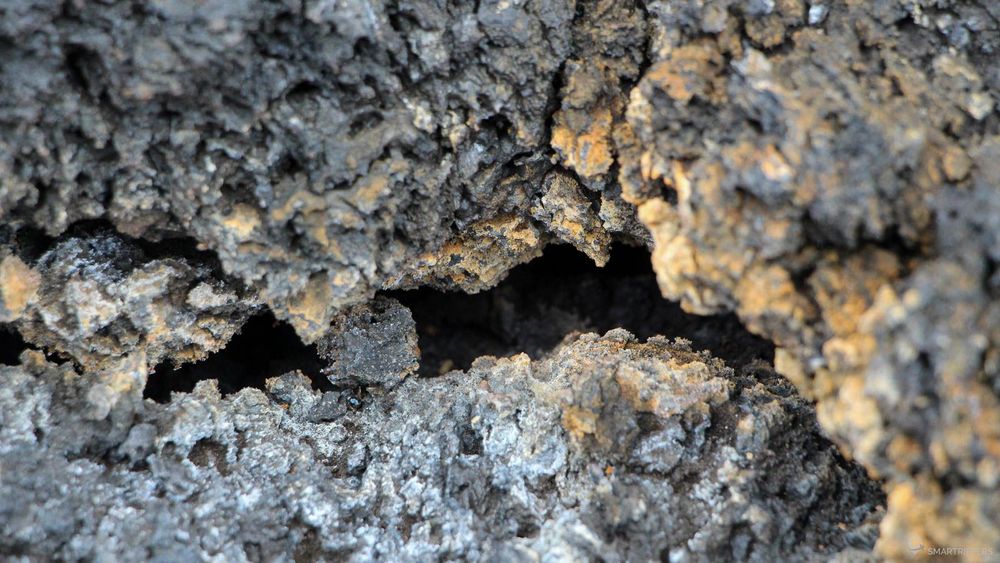
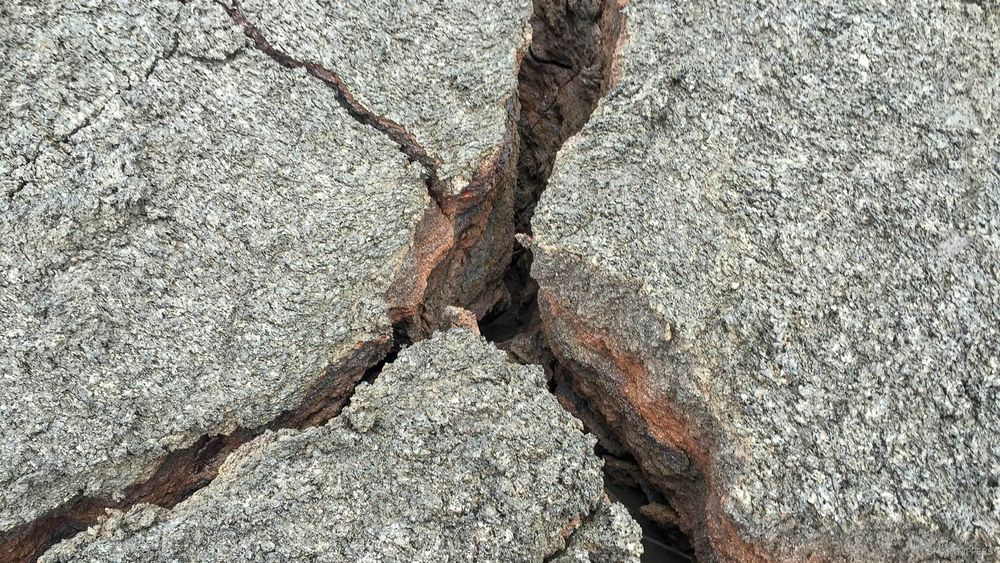
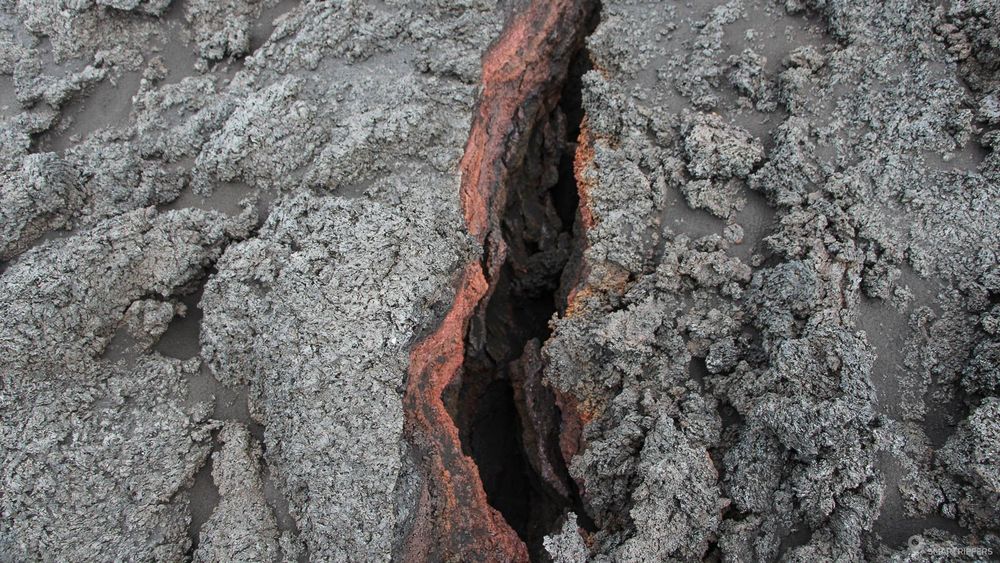
We then try to find the origin of this heat that emerges from the depths. We get our hands on the ground, groping the rock to find the hot spots that we will not be long in identifying. Some cracks are still hot inside! Passing the hand lightly, you feel the warmth as if you were inserting your hand into an oven. It's fascinating and scary at the same time! It's amazing to feel all the heat that the old molten rocks have stored. It will take decades for this lava to cool to the heart.
The little loop runs quickly but is really interesting from a geological point of view. It is quite rare to be able to walk on a lava field barely cooled! Although the place may look like the Leirhnjúkur lava field near Myvatn, it is much more recent and less touristic. An essential point of interest if you are in the Askja region.
Feel the warmth coming from the hot rocks.
To be alone to discover this place still unknown.
We are Sandrine and Flo, French thirty-somethings. In 2019 we quit everything to live our dream, become nomads and travel around the world. We left with our baby, Lena, who was only 5 months old at the time. After a first trip around the Pacific Ocean by plane and a long 3 months stay in Hawaii, we left to discover Iceland for 3 months on board our 4WD pickup truck and truck camper. Then we continued our adventure in North America.
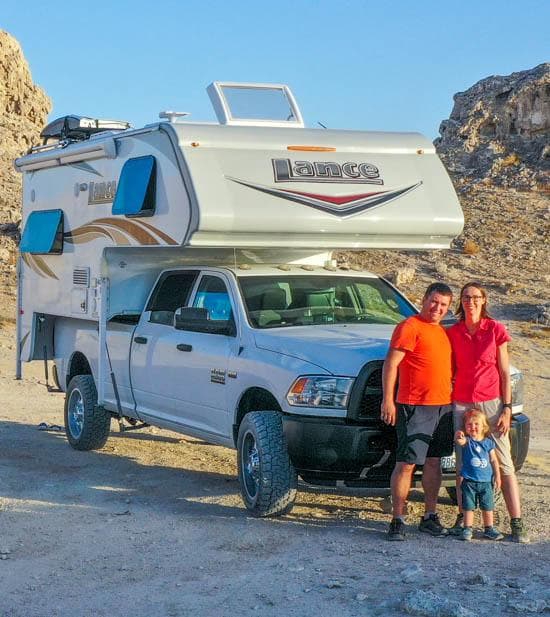
Today, if we can continue this adventure, it is above all thanks to our blog, Smartrippers! We created it one day in 2016, with the desire to share our good travel tips, without thinking that it would lead us there! We have developed it a lot over the years and have become experts on our 3 favorite destinations: Hawaii, Iceland and the American West. We now guide you to these destinations to help you plan the trip of your dreams!
Follow our adventures!